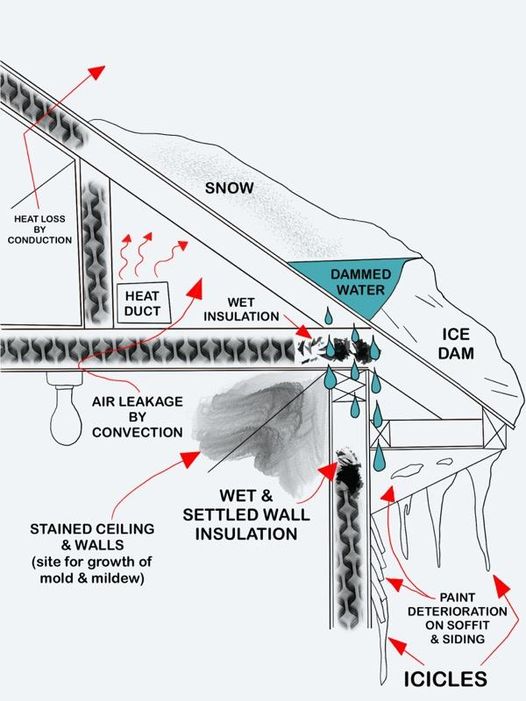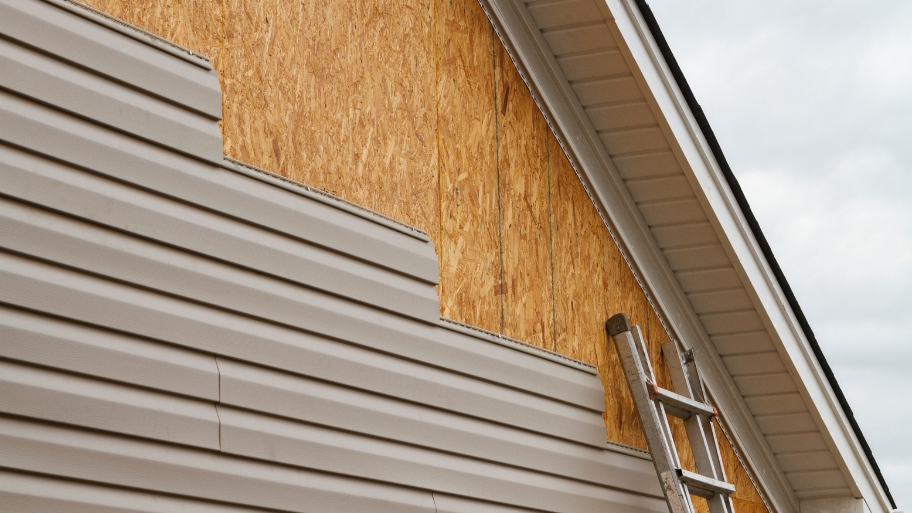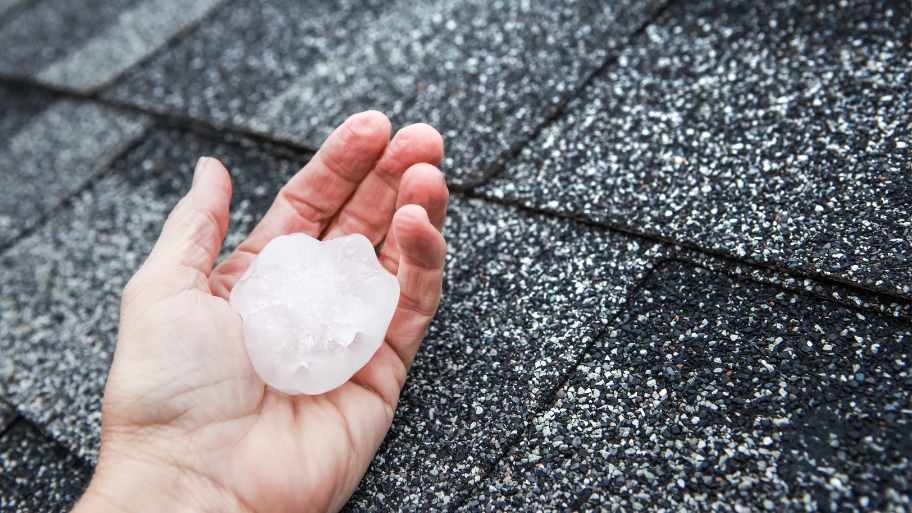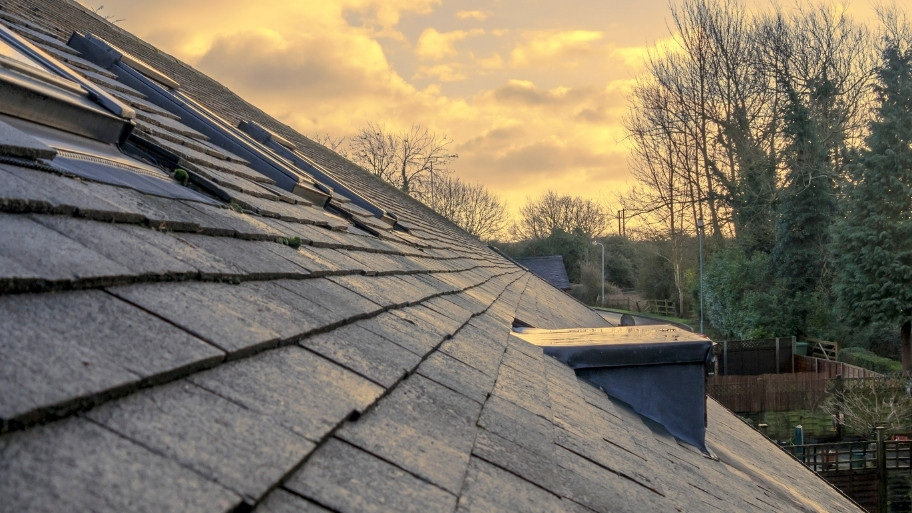If you’re worried about your roof collapsing after a Midwest snowstorm, odds are it’s safe. When it comes to large amounts of snow sitting on your roof ice dams are a bigger concern.
Today, I’m going to tell you how and why you should remove snow from your roof.
How much snow can my roof support?
It isn’t necessarily the depth of the snow sitting on your roof, it’s the weight. There’s a big difference between wet, heavy snow and light, fluffy snow. If you’ve ever shoveled your driveway after being dumped on by several inches of wet snow, then you know wet snow is a whole lot heavier than dry, fluffy snow.
In fact, six inches of wet snow is equal to the weight of about 38 inches of dry snow. But the good news is that your roof is required by building codes to hold up under the heaviest Midwest snows.
Ice dams: the real danger
Instead of being concerned about the weight of the snow, the bigger concern is what happens to the snow. I’m referring to ice dams. Piled snow on your roof gradually melts and re-freezes overnight, which can create ice dams.

Ice dams can cause a lot of damage to your home if left untreated. They can loosen shingles, cause your gutters to tear off, and cause water to back up under those shingles and drain into your home.
If the melting snow can’t drain off your roof properly it will eventually work its way under your roof covering and flow into the attic.
How to safely remove snow from your residential roof
Now that you understand the real problem with snow sitting on your roof, let’s cover a few steps to safely remove it from your home’s roof.
5 steps to safely remove the snow from your roof
1. Use a snow rake
A snow rake is the only device you should use to remove snow from your roof. But there are plenty of things you shouldn’t use.
Don’t use sharp tools to remove snow from your rooftop. This can damage the shingles underneath the snow.
Don’t try to melt the snow with any kind of open-flame, electronic devices, or heat gun as this will only create more ice.
And never use ice melt to remove snow from your roof as this too can damage it.
2. Start from the edge
Start from the edge of your roof when you’re removing snow and work your way across your roof from there.
3. Keep it away from drain spouts and ventilation
Try to keep a buildup of snow away from fire escapes, emergency exits, drain downspouts, and ventilation openings.
4. Go up three to four feet
At JB Roofing & Gutters we recommend removing the first three to four feet of snow above the gutters.
5. Be safe
As with any home maintenance be sure to exercise extreme caution. Removing snow from your rooftop can be dangerous, especially when it’s icy. Don’t try to remove heavy amounts of snow on your own.
And if it’s your first time, don’t use a standard ladder. A regular ladder can develop ice on the rungs and make the situation more dangerous.
Stay safe and let us do it for you
If you’re unsure of your roof’s situation or don’t feel comfortable doing it yourself, contact us or give us a call at 515-554-1964 and we’ll get you set up with a quote to remove the snow for you!

About the Author
Joe Burkhart, the driving force behind JB Roofing, has been a trusted roofing expert in Ankeny, IA, since 2006. Joe’s passion for quality craftsmanship and personalized service comes from over 20 years of hands-on experience, starting his journey in the roofing industry back in the early 1990s. JB Roofing is more than just a business to Joe—it’s a reflection of his commitment to providing reliable, long-lasting roofs that protect homes and families across Iowa.




